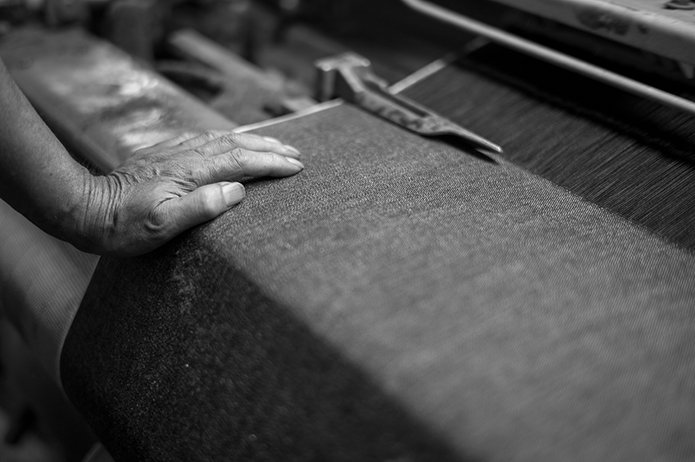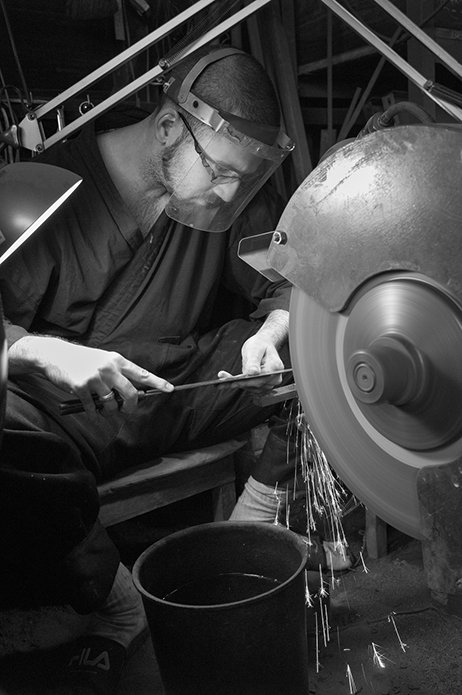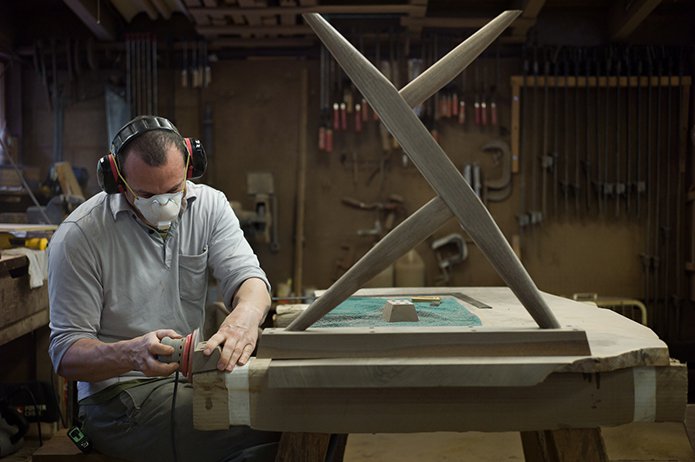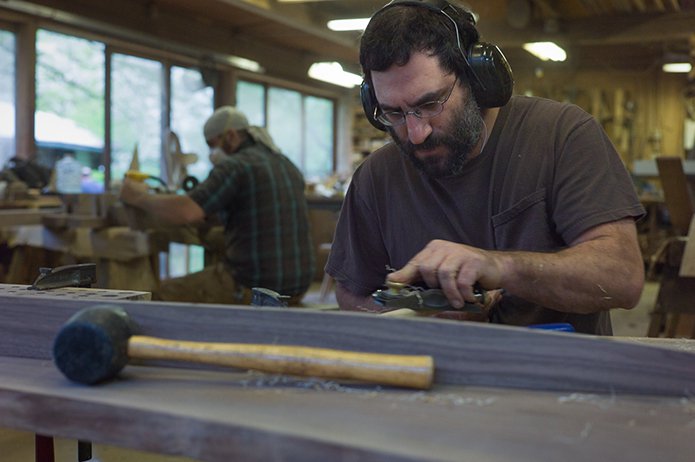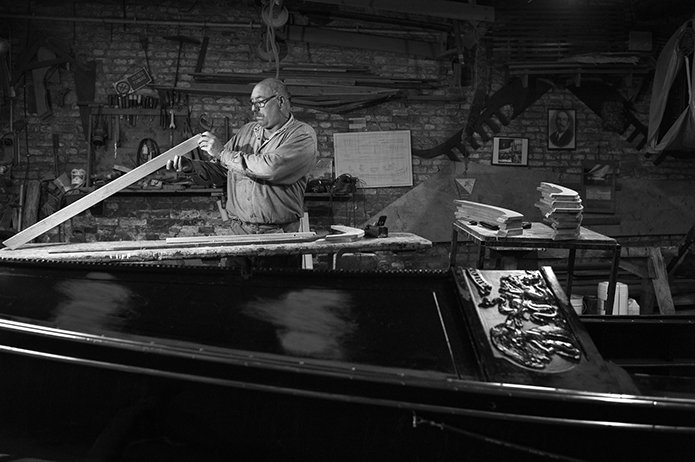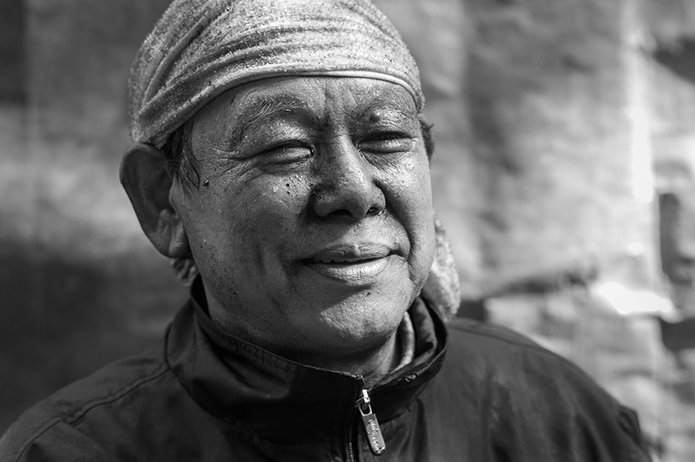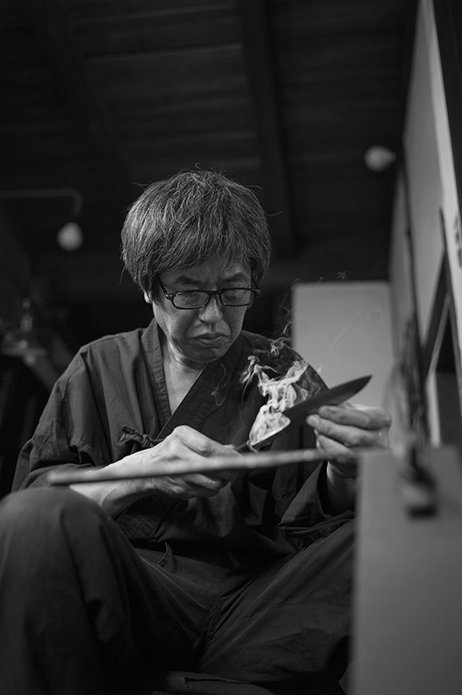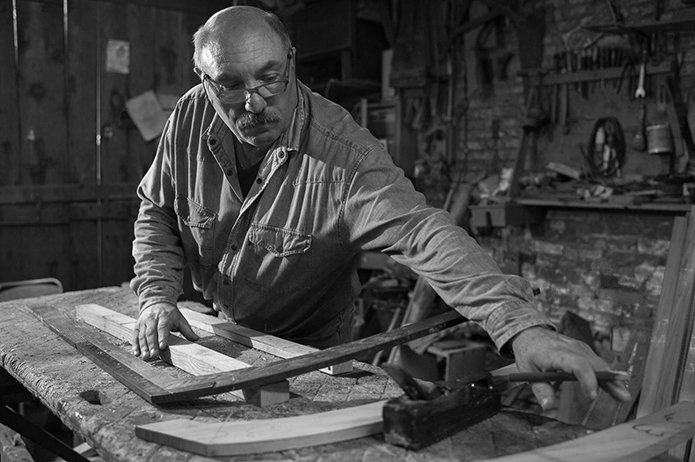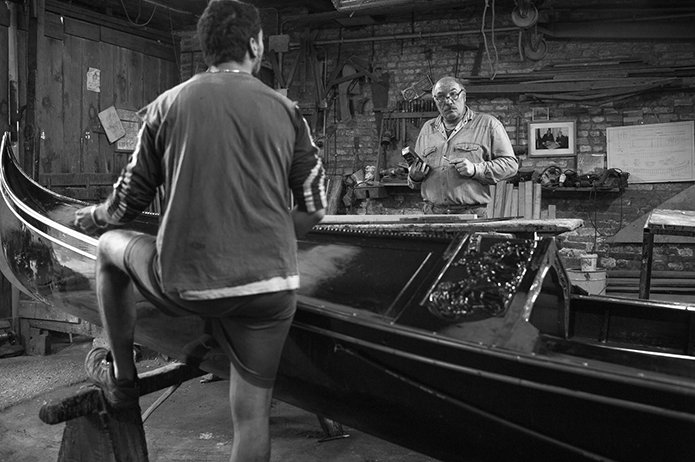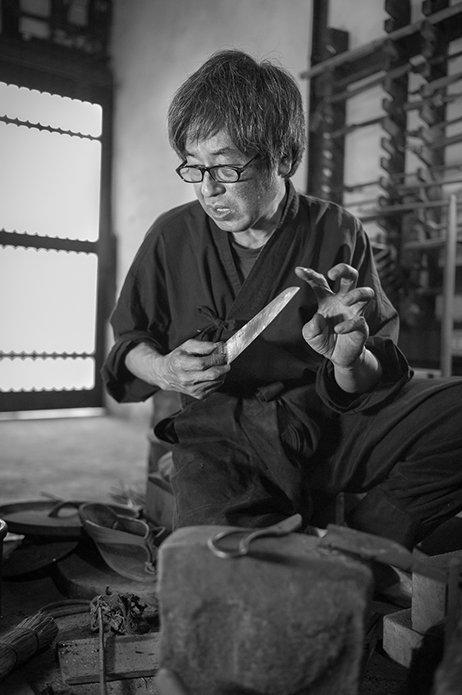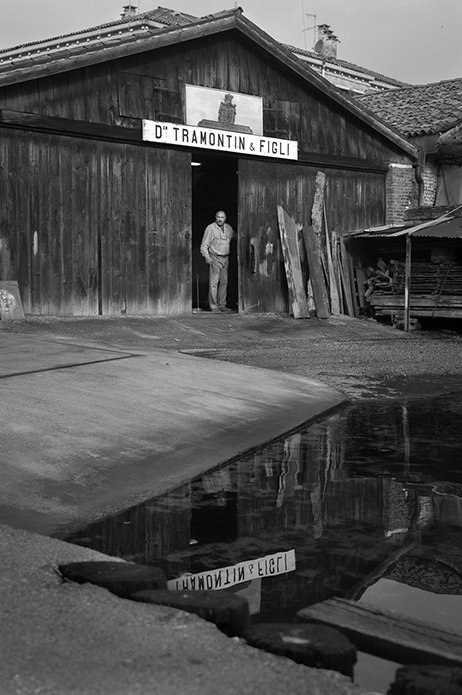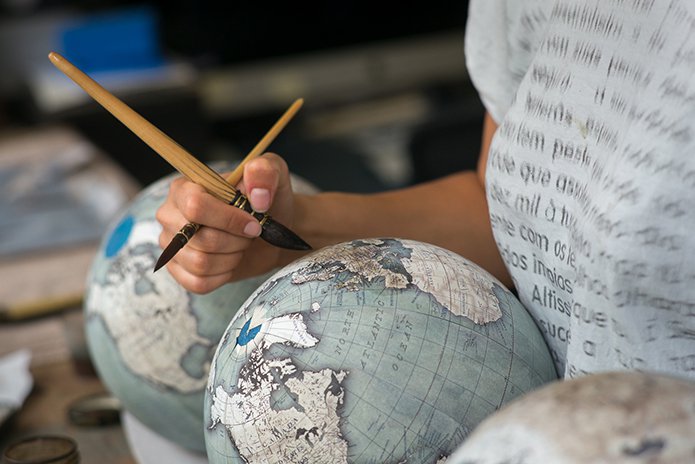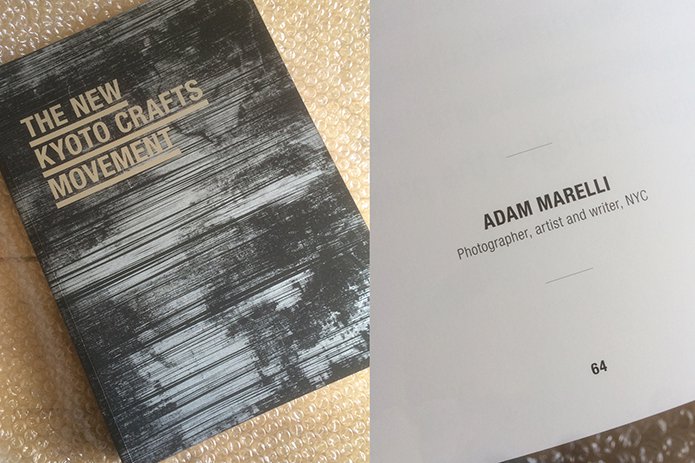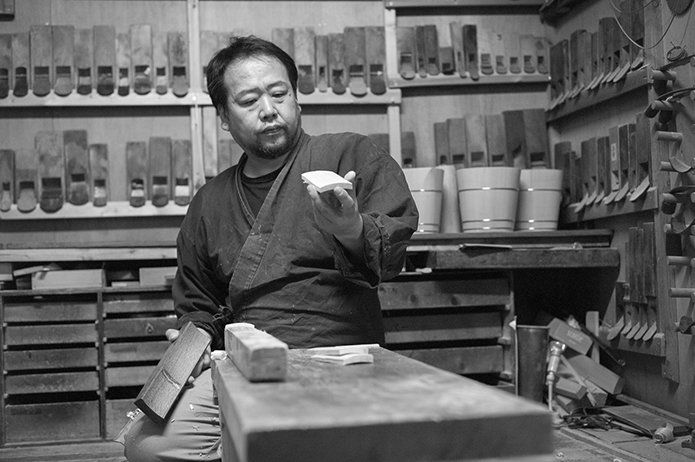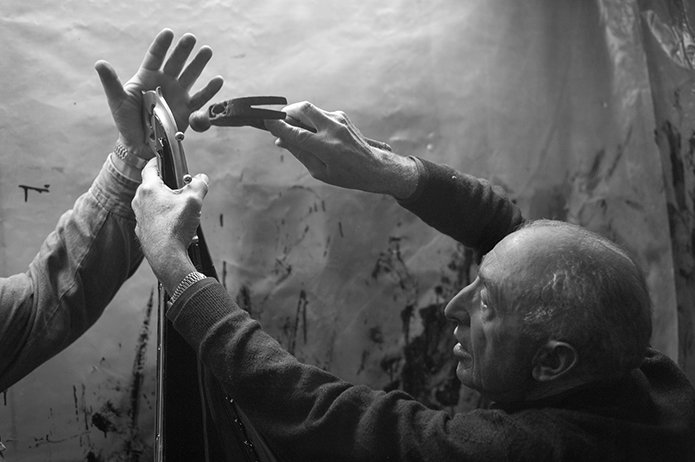
The photographer is always the invisible force behind an image, the eyes and the soul that are able to capture a scene at the optimum moment to allow a connection between subject and audience… the finger on the shutter button that at the ultimate moment transforms a simple snapshot into something altogether more meaningful.
Adam Marelli, cultural photographer, instinctively knows what makes a photograph more than simply a picture, more than a classic ‘still-life’ in the traditional terms of the inanimate, the contrived, the composed, but instead a ‘still-of-life’… one moment within a reality that is brought to life for an audience and resonates with the viewer.
Adam’s subject matter; craft and craftspeople, connects craftspeople to an audience, allowing a re-connection to the more meaningful aspects of labour. As an artist himself Adam understand the practicalities of a craftwork environment, quietly observing, immersing and absorbing the finer intricacies that define a true craft to communicate this via poignant imagery to the viewer. True ‘labours of love’ borne out of passion, authenticity and integrity combining responsibly-resourced raw materials, traditional tools, using skilled hands and time-honoured techniques in gritty work-shops means the audience can question bigger questions of mass-production and obsolescence as the image ignites a consciousness and enquiry within the viewers.
Adam explains more here…
There certainly seems to have been renewed interest in the work of craftsmen in recent years. How important do you feel the role of photography is in bringing about this resurgence?
The role of photography has been critical in two different ways:
1. If you don’t see it, does it exist? This has been the main problem with craftsmen finding new apprentices. The internet and photography started to connect masters with curious people who wanted to know more about their crafts and were not necessarily local.
2. After the economic collapse of 2008, people lost a lot of faith in big companies. All of the promises of pensions and protection went out the window. People wanted to take their futures into their own hands and one of the places that starts is by going back to the beginning and doing the following:
* Making things with your hands.
* Making things that people value enough to buy.
* Putting value on a quality of life, rather than just the dollars on a paycheck. Many of the craftsmen I’ve met love their way of life. No office, no desk, no boss over them. They work steadily because they love it and in the long run they feel like they get more enjoyment out of life and their labors.
Photography has helped in highlighting the work of handmade, high quality items made by expert craftsmen for new audiences, whether shoes, watches, suits or houses.
Do you feel that having had a prior career as an artist and builder has helped professionally as a photographer of craftsmen?
Yes. My art training taught me how to do things out of order. It can be a very non-linear type of thinking and feeling in art. That is very useful in the creative process. But unconstrained it can be a bit disastrous.
Building gave me structure. It taught me how to learn from tradition, how to follow instructions, and how to relate to people. On a typical day, I would have to engage a multimillionaire client, a graduate level architect or engineer, and a day immigrant laborer living paycheck to paycheck. It was broad spectrum, but it taught me that no matter how different we may seem, we share an awful lot in common.
There’s a relaxed and natural feel to your photos. How do you achieve this authentic look without staging?
I only photograph people I like, so I enjoy spending time with them. The fact the pictures look natural is a reflection of the time we spent together.
One of the complaints craftsman have about film crew is them being asked to “cut that piece again.” Most of them wish they could say “Pay attention! I can’t undo a cut, this is a computer, its real life. There is no undo.”
It’s clear the craftsmen you photograph are very comfortable with you being in their company for long periods of time and have granted you a high degree of access. Is it your time in construction that has helped you gain the mutual respect and credibility with them?
As a builder, I’m familiar with the workshop environment and have good situational awareness within the workshop, for instance how saws work, and so the craftsmen don’t have the same safety concerns with me as they would do with the majority of photographers and journalists who come to visit them.
Craftsmen often tell me they get bored with journalists asking them the same questions, whereas I’m asking questions that are less obvious, and can spot influences in their work from other traditions.
You run cultural photography courses in Asia and Europe each year. Can you provide some insights into what these courses entail and what participants can expect to learn from them?
The courses are specifically designed to show photographers how to approach craftsmen in their own place of work. I like to take people behind the scenes of a workshop and see how it relates to the city. For instance, I will take a group of photographers to a workshop in Japan where they are making kitchen knives, and then afterwards we’ll go to a sushi restaurant and see the knife being used, and it’s interesting how the knives are looked at differently. Having this different level of access gives participants the ability to understand the culture of the city in a way that they couldn’t do on a day excursion on a travel bucket list.
The photography workshops are intended to bring people into the culture, to things that are not easily accessible and guide them through a personal experience that will connect them to the place for the rest of their lives.
There’s an even mix of attendees; some are photographers who may have plateaued and want to move into a different direction. Others are professional photographers who are running workshops themselves and want to see how another photographer runs a workshop – I’m more than happy to share the business development aspect of photography with them. There are also a number of attendees who consider themselves amateurs, but professionals in other walks of life, such as in finance, law, web development etc, who have an interest in photography and want to make interesting pictures. Most are interested in art, hence why they find me. Once you can make the connection between art and photography your options become a lot richer.
You have recently been contributing to the book “The New Kyoto Crafts Movement”. Can you explain what this is about?
The New Kyoto Crafts Movement is a book about Japan Handmade, a small collective of independent craftsmen in Kyoto who had rarely sold outside of Japan. I was asked to be one of essayists contributing to the book to give my impression on how they were going to be able to make their traditional crafts relevant to an international market.
It raises an interesting question, which is how do traditional craftsmen keep themselves relevant and culturally present in the modern day…? A Japanese wooden spoon maker might be able to sell a crafted wooden spoon in Kyoto for $80, but it’s unlikely anyone in Paris would spend anywhere near that.
BUT, if the same craftsmen were to use their carpentry sensibilities and adapted what they make to have a sensitivity to items required in Paris, then they might have a chance. It’s about adapting whilst staying true to tradition. Traditions die when the manufacturer gets stuck on the product – the thing they make rather than the way they make it. Those that can show a level of adaptability will survive. Are Japanese craftsmen an endangered species? The answer is whether they are adaptable…
Thanks to Adam for taking time out of his busy schedule to answer our questions. All images © Adam Marelli.
Adam Marelli Portfolio: adammarelli.com
Adam Marelli Travel Workshops: amworkshops.com

